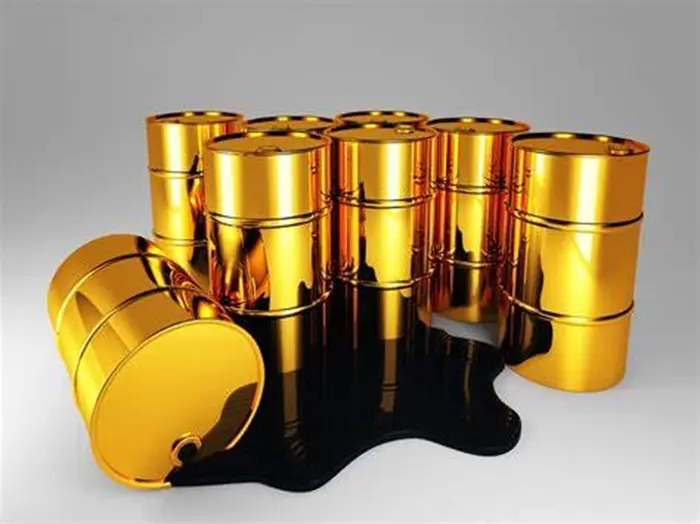Crude oil is one of the most important natural resources in the world, serving as the primary raw material for the production of fuels, lubricants, plastics, and countless other products. Its physical characteristics and composition vary depending on its source, making it a subject of great interest to both the energy industry and environmental scientists. In this article, we will explore what crude oil looks like, its different types, and how these variations influence its use and value in global markets.
Understanding Crude Oil
What is Crude Oil?
Crude oil is a naturally occurring liquid found beneath the Earth’s surface, formed from the remains of ancient marine organisms. Over millions of years, these remains were buried under layers of sediment and subjected to heat and pressure, transforming them into hydrocarbons, the primary component of crude oil. These hydrocarbons are organic compounds consisting of hydrogen and carbon atoms, and they are what give crude oil its energy-rich properties.
The Chemical Composition of Crude Oil
Crude oil is composed of a complex mixture of hydrocarbons, which can be broadly categorized into four main types: alkanes (paraffins), cycloalkanes (naphthenes), aromatics, and asphaltics. Each of these hydrocarbon types contributes to the physical characteristics of crude oil, such as its color, viscosity, and density.
Alkanes (Paraffins)
Alkanes are the simplest type of hydrocarbon, consisting of chains of carbon atoms bonded to hydrogen atoms. They are usually found in lighter fractions of crude oil and contribute to its fluidity.
Cycloalkanes (Naphthenes)
Cycloalkanes have a ring structure rather than a chain and are typically found in heavier fractions of crude oil. They tend to make the oil more viscous and less volatile.
Aromatics
Aromatics are hydrocarbons with at least one benzene ring in their structure. They are usually found in the heavier fractions of crude oil and are more stable than alkanes and cycloalkanes.
Asphaltics
Asphaltics are the heaviest and most complex hydrocarbons in crude oil, often found in the form of resins and asphaltenes. They contribute to the oil’s viscosity and are commonly used in the production of asphalt.
See Also: Why Is Crude Oil Important?
Physical Characteristics of Crude Oil
Color
The color of crude oil can vary widely depending on its composition and the presence of impurities. It can range from almost clear or light yellow to dark brown or even black.
Light Crude Oil
Light crude oil is typically lighter in color, ranging from pale yellow to light brown. It contains a higher proportion of lighter hydrocarbons, such as alkanes, which give it a lower density and viscosity. Light crude is often more desirable in the market because it yields a higher percentage of valuable products like gasoline and diesel fuel.
Heavy Crude Oil
Heavy crude oil is darker in color, often appearing dark brown or black. It contains a higher proportion of heavy hydrocarbons, such as cycloalkanes and asphaltics, making it more viscous and difficult to refine. Heavy crude is generally less valuable than light crude because it requires more processing to produce the same amount of fuel.
Viscosity
Viscosity refers to the thickness or resistance to flow of a liquid. Crude oil’s viscosity can vary from very fluid to highly viscous, depending on its composition.
Low-Viscosity Crude Oil
Low-viscosity crude oil flows easily and is typically lighter in color. It is easier to extract and transport through pipelines and is more cost-effective to refine into fuels.
High-Viscosity Crude Oil
High-viscosity crude oil is thicker and does not flow as easily. It is more challenging to extract and transport, often requiring heating or the addition of diluents to facilitate movement. This type of crude oil is generally heavier and darker in color.
Density
Density is the mass per unit volume of a substance, and in the case of crude oil, it is often measured in degrees API (American Petroleum Institute) gravity.
High API Gravity (Light Crude)
Crude oil with a high API gravity is lighter and less dense. It is more desirable in the market because it produces more high-value products like gasoline and jet fuel. Light crude oil typically has an API gravity of 35 or higher.
Low API Gravity (Heavy Crude)
Crude oil with a low API gravity is heavier and denser. It is less desirable because it produces more lower-value products like fuel oil and asphalt. Heavy crude oil typically has an API gravity of 20 or lower.
Odor
Crude oil has a distinct odor that can vary depending on its composition. It often has a strong, pungent smell due to the presence of sulfur compounds and other volatile organic compounds (VOCs). The intensity of the odor can vary, with some types of crude oil having a more noticeable smell than others.
Types of Crude Oil
Sweet Crude Oil
Sweet crude oil contains low levels of sulfur, usually less than 0.5%. It is called “sweet” because it has a relatively mild odor and taste compared to sour crude. Sweet crude is highly sought after in the market because it is easier to refine and produces higher-quality products.
Light Sweet Crude
Light sweet crude is the most desirable type of crude oil in the market. It is light in color, low in viscosity, and has a high API gravity. It yields a higher percentage of high-value products like gasoline, diesel, and jet fuel.
Heavy Sweet Crude
Heavy sweet crude is less common than light sweet crude. It has a higher viscosity and lower API gravity, making it more challenging to refine. However, its low sulfur content still makes it more desirable than sour crude oil.
Sour Crude Oil
Sour crude oil contains higher levels of sulfur, typically more than 0.5%. The sulfur gives it a more intense odor and makes it more corrosive and challenging to refine. Sour crude requires more complex refining processes to remove the sulfur and produce usable products.
Light Sour Crude
Light sour crude has a higher API gravity and is less viscous than heavy sour crude. While it still requires more refining than sweet crude, it is more manageable and produces a relatively high yield of valuable products.
Heavy Sour Crude
Heavy sour crude is the least desirable type of crude oil. It is dark, highly viscous, and has a low API gravity. The high sulfur content makes it difficult and expensive to refine, and it often yields a lower percentage of high-value products.
The Global Importance of Crude Oil
Economic Impact
Crude oil is a critical component of the global economy. It is the primary source of energy for transportation, heating, and electricity generation. The price of crude oil directly influences the cost of goods and services worldwide, as it affects the price of fuel and transportation.
Major Oil-Producing Regions
Middle East: The Middle East is home to some of the largest oil reserves in the world, including countries like Saudi Arabia, Iraq, and Iran. The region plays a pivotal role in the global oil market and has a significant impact on oil prices.
North America: The United States and Canada are major oil producers, with significant reserves of both conventional and unconventional oil, such as shale oil. The U.S. is the largest producer of oil globally, thanks in part to advances in hydraulic fracturing (fracking) technology.
Russia: Russia is one of the world’s largest oil producers and exporters. Its vast reserves of both conventional and heavy crude oil make it a key player in the global oil market.
Africa: Several African countries, including Nigeria, Angola, and Libya, are major oil producers. The continent’s oil reserves are a significant source of revenue for these countries, but political instability and infrastructure challenges often affect production levels.
Environmental Impact
The extraction, transportation, and refining of crude oil have significant environmental impacts. Oil spills, air pollution, and greenhouse gas emissions are some of the major concerns associated with the oil industry.
Oil Spills
Oil spills can have devastating effects on the environment, particularly in marine ecosystems. Spills can occur during drilling, transportation, or storage, and they can cause long-lasting damage to wildlife and habitats.
Air Pollution
The combustion of crude oil and its derivatives releases pollutants, including carbon dioxide (CO2), sulfur dioxide (SO2), and nitrogen oxides (NOx), into the atmosphere. These pollutants contribute to air quality degradation and are major contributors to climate change.
Greenhouse Gas Emissions
The burning of fossil fuels, including crude oil, is a leading source of greenhouse gas emissions. These emissions contribute to global warming and climate change, leading to rising sea levels, extreme weather events, and disruptions to ecosystems.
Conclusion
Crude oil is a vital resource that plays a central role in the global economy. Its appearance and characteristics vary widely depending on its composition and source, with different types of crude oil having distinct properties that influence their value and use. From light sweet crude to heavy sour crude, each type has its advantages and challenges. Understanding what crude oil looks like and its different forms is essential for anyone involved in the energy industry, as it directly impacts the processes of extraction, refining, and consumption. As we continue to rely on crude oil for energy and materials, it is crucial to recognize both its economic significance and the environmental challenges it presents.
[inline_related_posts title=”You Might Be Interested In” title_align=”left” style=”list” number=”3″ align=”none” ids=”3358,3361,3248″ by=”categories” orderby=”rand” order=”DESC” hide_thumb=”no” thumb_right=”no” views=”no” date=”yes” grid_columns=”2″ post_type=”” tax=””]


































